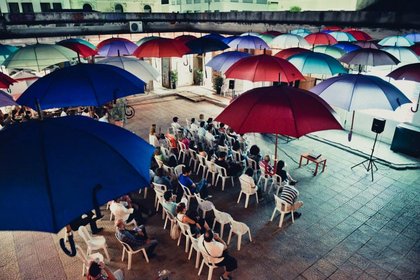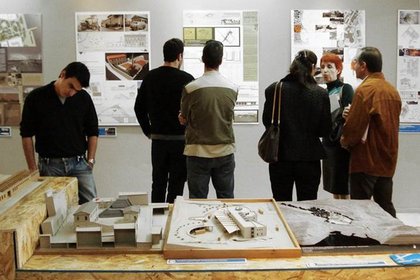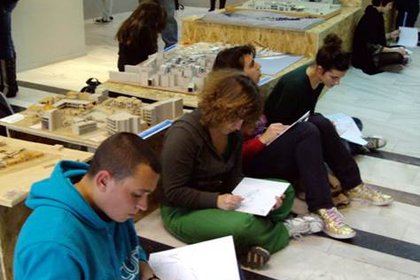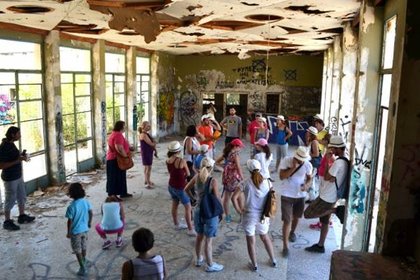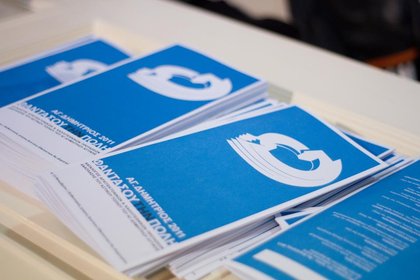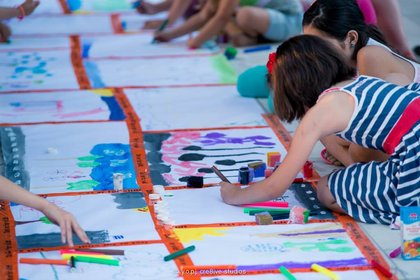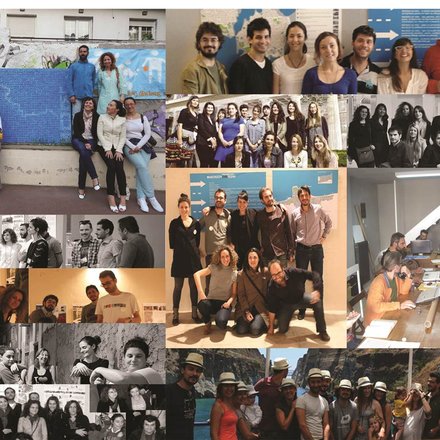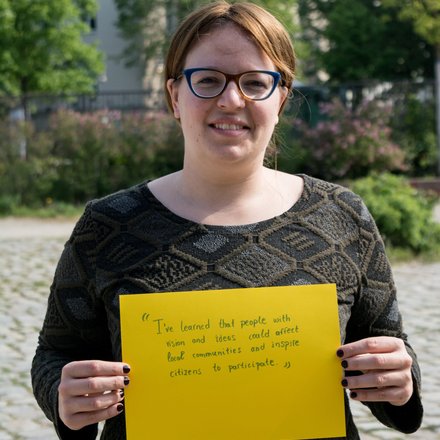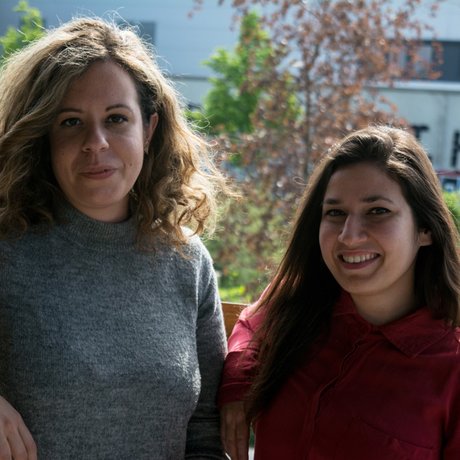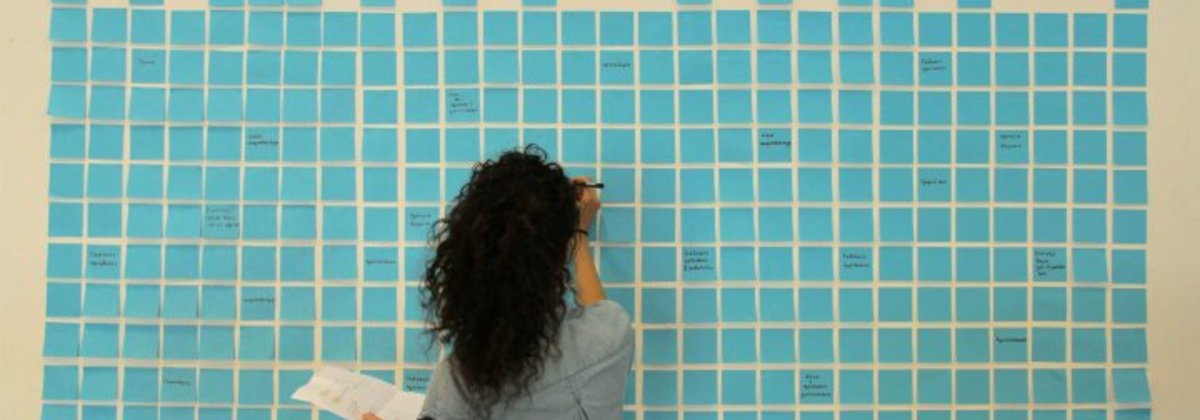
imagine the city
Format Exhibition
City Chalkida, Greece

Imagine the City started as a think-tank, through an open citizen group, which was investigating new ways and processes to cultivate urban culture and highlight the potential for improvement of Greek contemporary cities’ images and experiences. After a series of discussions, the group pointed its focus on the ways in which direct and effective relationships between creatives and citizens could be developed that allow mutual learning and collective envisioning. The initial idea was to design an online platform, which would facilitate the dialogue and networking of planners and citizens. The local exhibition was developed as the physical version of the online platform. After seven years of organizing about five hundred events in thirteen different cities, an open dynamic network of active teams and individuals has developed all over Greece. Imagine the City empowers citizens by spreading the idea across the country through local teams and exhibitions, while at the same time adapting and developing the exhibition based on its members’ skills and the needs of the specific urban context.

The local exhibition was developed as the physical version of the online platform. The scope of the tool is to investigate new ways and procedures of cooperation, participation and actions which reclaim collective intelligence about local results and translocal challenges. It seeks to contribute in the local urban development and identity of place, using creativity and innovation by the community for the community. Furthermore, it aims to cause social and institutional innovations related to transparent decision-making processes for both urban space formation and development of Greek cities.

imagine the city in numbers:
7 years / 13 cities / 632 urban researchers / 434 exhibits / 169 side events / 142 local team members / +30.000 participants.
As a result of the exhibitions, an open dynamic network of active teams and individuals has developed all over Greece, that supports activities about the image and culture of Greek cities. imagine the city empowers citizens through two distinct ways: a) local teams and exhibitions spread the idea across Greece; b) though the principle of openness, each local team is free to develop the exhibition based on its members’ skills and the needs of their own city.
People Power Form a local team / connect translocally
Form an interdisciplinary group of 8-10 committed citizens. Interdisciplinarity is a key-feature as the exhibition requires diverse skills and capacities.
People Power Map and connect local doers
Map and engage all relevant people, events, organisations, sites that could be important for your exhibition.
Communication Inspire through a creative visual identity
Building the visual identity of the exhibition and the logo, you can use examples from previous exhibitions and be in line with the general communication identity of ITC. For the logo, a landmark of the city is selected and edited to match the abovementioned guidelines. It is used in every printed or online communication material of the exhibition.
Things you need Find the exhibits
Possible exhibits can be proposals for the regeneration, revival and/or aesthetic upgrade of neighbourhoods, public spaces, buildings with architectural interest, or mobility plans etc. They can be students’ projects in the context of undergraduate, or post-graduate studies or, professionals’ proposals in the context of their social contribution and projection of their work. These are collected during an open call that takes place for over a month via the official page of the exhibition, social media pages, newsletters and through academic or other platforms. The minimum number of the projects that can be displayed in the exhibition is ten.
Location Be creative about the hosting space
The location of the exhibition should be in a central and accessible space, so that as many people as possible could visit it. It should be a large open-plan, neutral space, without intense architectural or decorative elements, to better showcase all projects. The chosen space should be able to cover operational needs of the exhibition such as adequate natural lighting, power outlets etc.
The suitability of the location is assessed by criteria of quality, aesthetics and ergonomics. A space that may not meet all standards but gives the possibility for a creative setting, could also be approved.
Things you need Make sure you have the following
For the production, make sure you have: TV, laptop, projector and screen-wall projection, wooden pedestals for placement of three-dimensional plastic models, lighting and installation system of the projects, at least 50 chairs. Then you would need to prepare: project signs and billboards 84x120mm, map of the city showing the locations of each project, promotion and communication material.
Funding Connect connect connect
The budget for the exhibition ranges, and can be covered in whole by sponsorships. Make sure to research and approach first local stakeholders: 1) Local shops and companies that would be interested in supporting such an event for their city, and be advertised through it, can provide us with sponsorships, printing communication material etc. 2) Public or private stakeholders, like chambers or municipalities, can provide space, communication of the event or other materials. 3) Other local media sponsors can communicate the event.
Communication Communication tools
Social media and press releases are used to communicate the event before and during the exhibition. Use of Social Media Channels for every imagine the city exhibition aims not only to inform and activate local community in every city but also to maintain an open to everyone online "archive", even after the end of the exhibition.
Furthermore, the exhibition is presented to public via any kind of artistic interventions in the public space of the city or events before the opening of the exhibition. It is recommended that the event should also be communicated to institutions and relevant organizations in order to gain support, involvement, as well as sponsorships.
Communication Organise parallel events
Parallel events are an integral part of the exhibition, since they contribute to raising awareness and enhancing active participation of the local community. Such events may be presentations, workshops, installations, cultural activities and every other activity that can help citizens imagine and learn about their city. Parallel events are organised during the exhibition or before, take place in the exhibition space or every other spot in the city, and address specific target groups (ie. students) or be open to the public.
